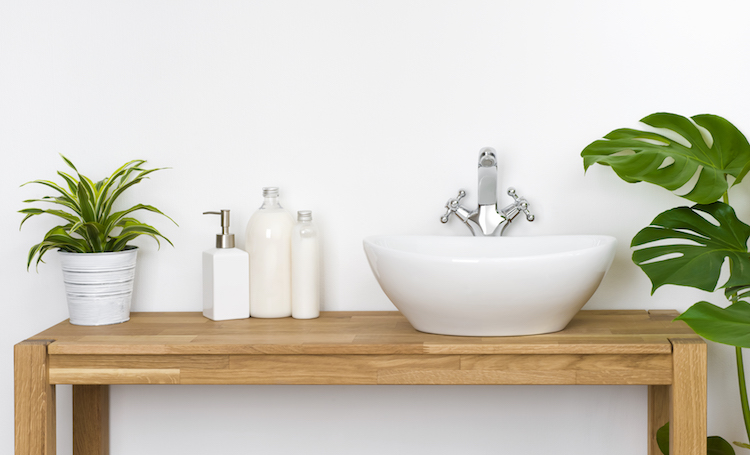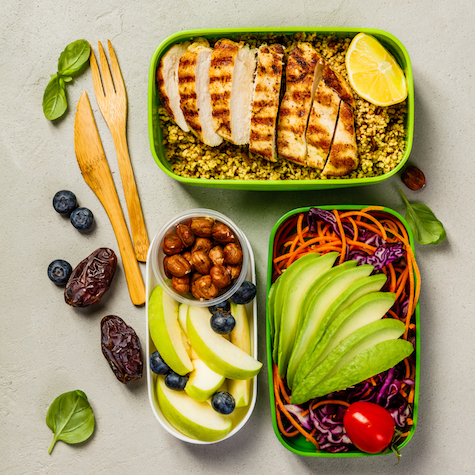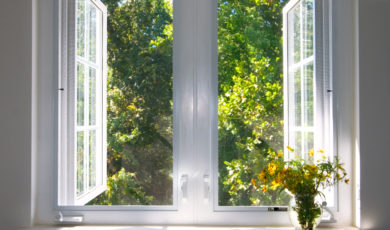It’s Easy Being Clean

Tidying up your home is on trend, but having a cleaner life is so much bigger. When it comes to ‘clean living,’ it’s not just about organization; it’s about making small, simple swaps in your daily routine that are sustainable for you — meaning they’ll add up to a big difference for your health, happiness and the environment around you.
Give Yourself (Mental) Space
Pushing yourself full-force 100% of the time leaves you susceptible to burnout, so identifying when you need to scale back or take a timeout will help keep you on track. “Practicing mindfulness as part of your overall grit toolkit can help bring larger perspective to your journey,” says Nicole Ng, Senior Research Scientist at Lumosity. “Looking for opportunities to build your playfulness, humor and creativity during your journey towards your goals can redefine what grit — the persistence of effort — looks like for you.”
Understand “Surface Clean”
Flat surfaces collect clutter like a paper clip to a magnet. “Because they also take up the largest part of your visual field, the more you can keep tables, floors, beds and countertops clear, the cleaner and more spacious these areas feel,” says Jessica Samson, spokesperson at The Maids. The biggest clutter culprit is paper; try Catalog Choice to unsubscribe from unwanted mailings and apps to keep your Post-It reminders to a minimum. And, of course, any paper you can’t avoid should be recycled!
Make Your Home a Multi-Tasker
Another way to keep clean is to purchase items for your home thoughtfully, choosing sustainably-sourced pieces that promise a long-life and more than one use. “I’ve long touted the use of dual-function furniture as a great way to keep a house in order,” says Sampson. “That’s why I have dressers in every room of my home, and why nearly everything I don’t sit on is storing one thing or another.” If you don’t want to work at organizing your home every day, it’s worth finding furniture that can handle some of the clutter control for you.
Start Purging
Purging is a necessary evil for most of us. We all have closets with clothes that don’t flatter and shelves with books we don’t read, games we don’t play, and knick-knacks we don’t dust. Make a promise to yourself this year that you will at least start the process of purging the things that you no longer need, use or have an emotional connection to. “If it’s hard to part with some items, just remove them for a while; put them in a box in the attic and give yourself some space to decide,” Samson suggests. “You may find you didn’t miss them like you thought you would.”
Reduce Your Waste
20,000 tons of waste could be saved if each American household used three less rolls of paper towels per year. Less landfill waste = less methane emitted = happier planet. “I have found I prefer to use a SKOY cloth over paper towels anyhow,” says Christine Dimmick the founder of natural home cleaning line The Good Home Co. and author of “Detox Your Home.” “They wipe like a paper towel and clean like a sponge and completely decompose after using — rapidly — like, 3 months to decompose. They last me at least a month and can be cleaned in the dishwasher.”

Decant, Decant, Decant
One simple way to be more mindful of just how much product you have, from beauty products to foods, is to take the time to decant them into sustainable vessels. Not only will, say, a decanted liquid hand soap look so much more appealing on your shelf, you will also be able to buy in bulk, reducing unnecessary packaging and waste. The visual nature of decanting will also help ensure you’re aware of exactly how much product you have, avoiding over-buying and duplicate purchases.
Cut Your Home Air Footprint
Did you know your home air has more pollutants than the outdoors? “The candles you burn, the air fresheners, cleaning products — even your laundry detergent add VOCs [volatile organic compounds] in the air which can cause allergies, stuffiness and trigger respiratory conditions,” says Dimmick. Awair is a device that can track toxins in your air — right down to the source — chemicals, dust, even CO2,” says Dimmick.
Sleep Better
When it comes to practicing a healthy lifestyle, it’s all too easy to fall into the trap of “I’ll start tomorrow.” But why not start tonight? The easiest way to a healthy tomorrow, according to certified clinical sleep educator and Saatva sleep consultant Terry Cralle, MS, RN, is a good night’s sleep. Where to begin? Limit your caffeine intake in the hours leading up to bedtime; try caffeine-free herbal tea instead. “Peppermint aids in digestion, Ginger relieves nausea, and, of course, Chamomile can help ease you into a pleasant slumber,” says Cralle. Adding yoga or meditation to your nighttime routine can also help you wind down. “Even if it’s only for 15 minutes before bed — to calm your mind and reduce the day’s mental noise,” says Cralle. Additionally, it’s important to note that before and after you’ve dozed off, your environment plays a major role in your quality of sleep. “Set the temperature in your bedroom between 60 and 67 degrees Fahrenheit, and disconnect from all screens an hour before bed,” says Cralle. Finally, to encourage REM sleep (the good stuff: it allows our bodies to repair themselves and build up energy for the next day) you first need to find the right mattress for your sleeping style. “Back sleepers: Slightly firm with a balance of comfort and support. Side sleepers: Softer to maintain the natural curvature of your spine. Stomach sleepers: Medium firm with a little give to reduce pressure,” says Cralle.

Eat Real Food
Dr. Warren Willey, a doctor of osteopathic medicine and author of the new book “Obtainable: Enjoy the Body and Energy You’ve Always Wanted – Beyond Diet and Exercise” has a simple tip for clean eating: When at the grocery store and reading food labels, if the sugar content exceeds 7 grams per serving, skip it. It is likely too calorically dense and better to avoid. And if the sodium content is greater than 200 mg per serving, skip that too. For a full guide to making food choices, check out our clean grocery shopping guide.





